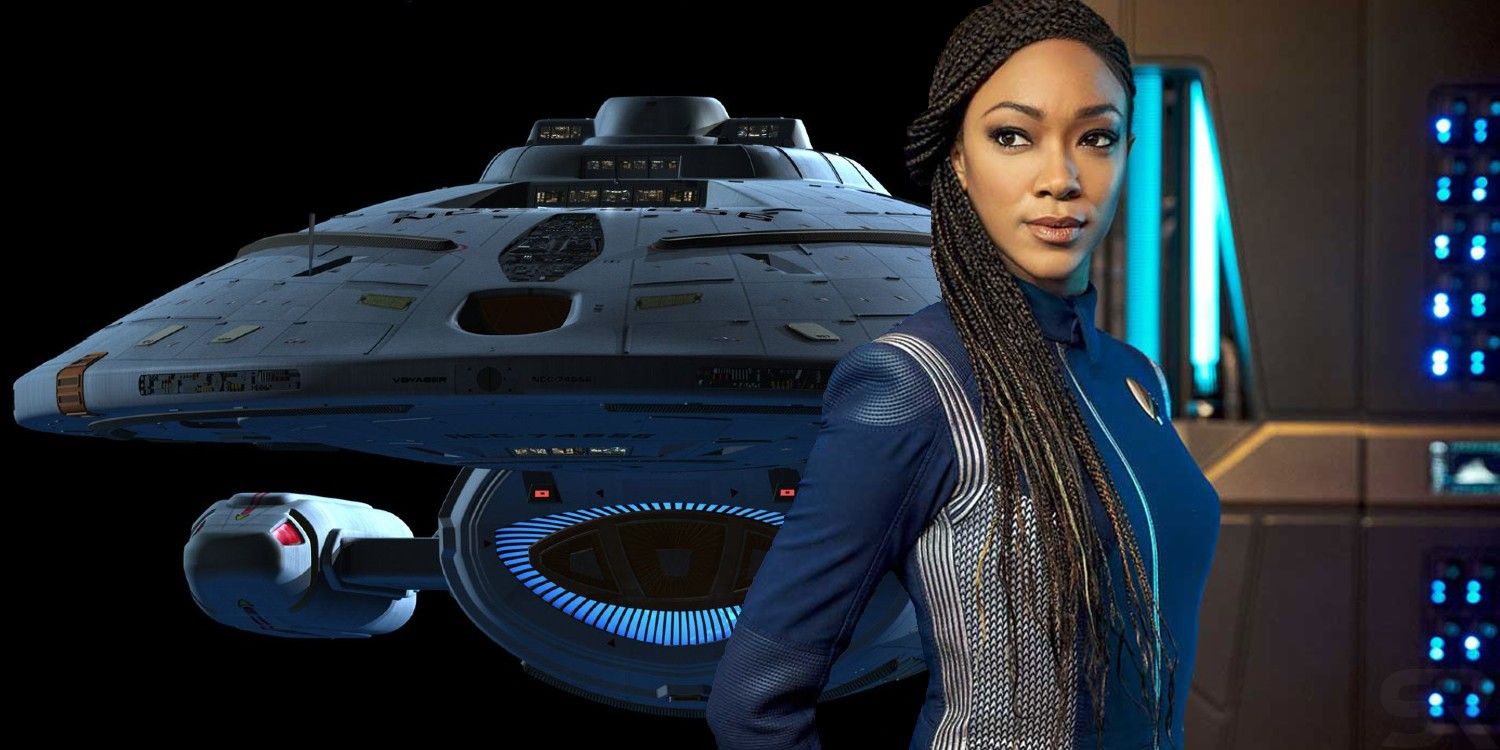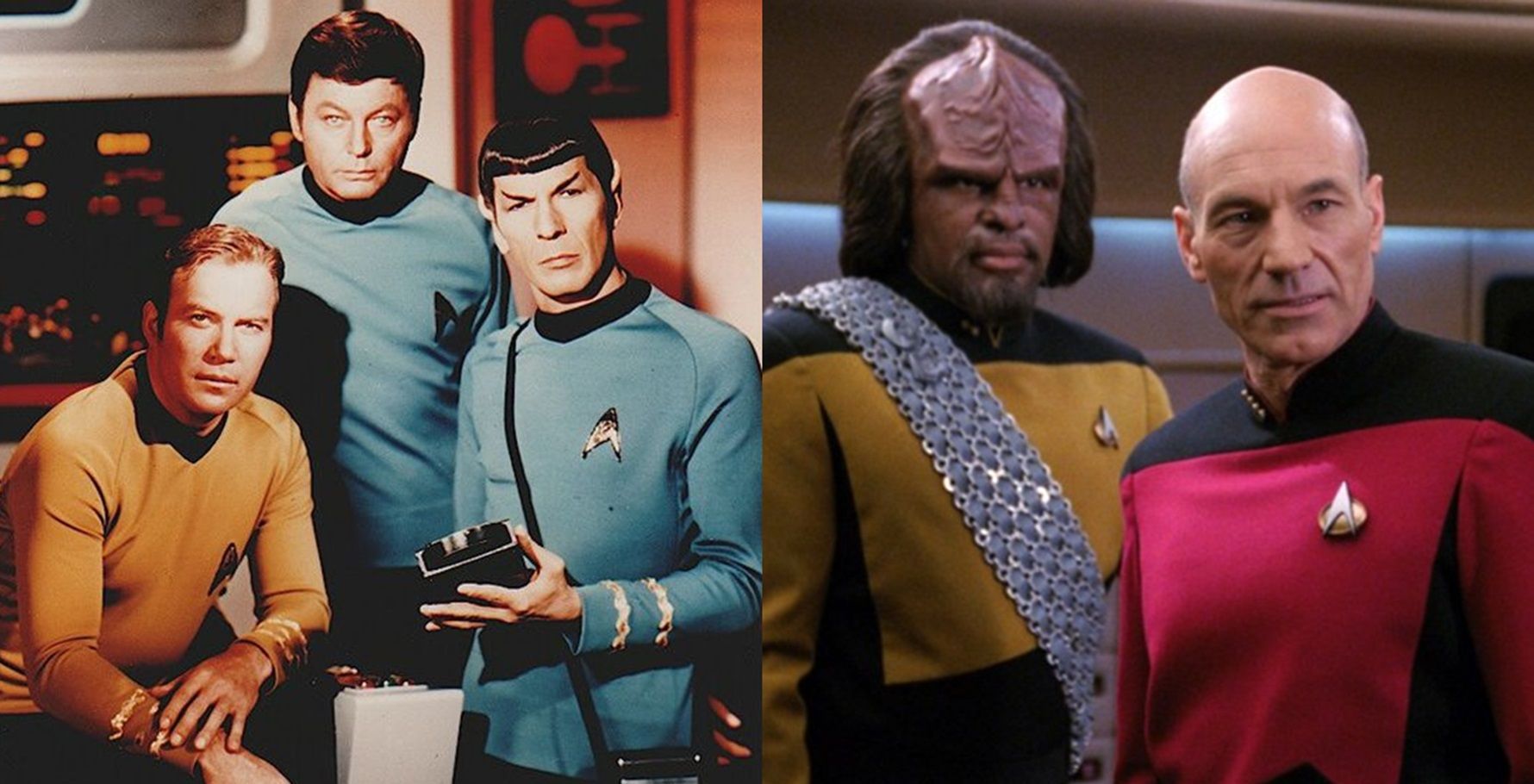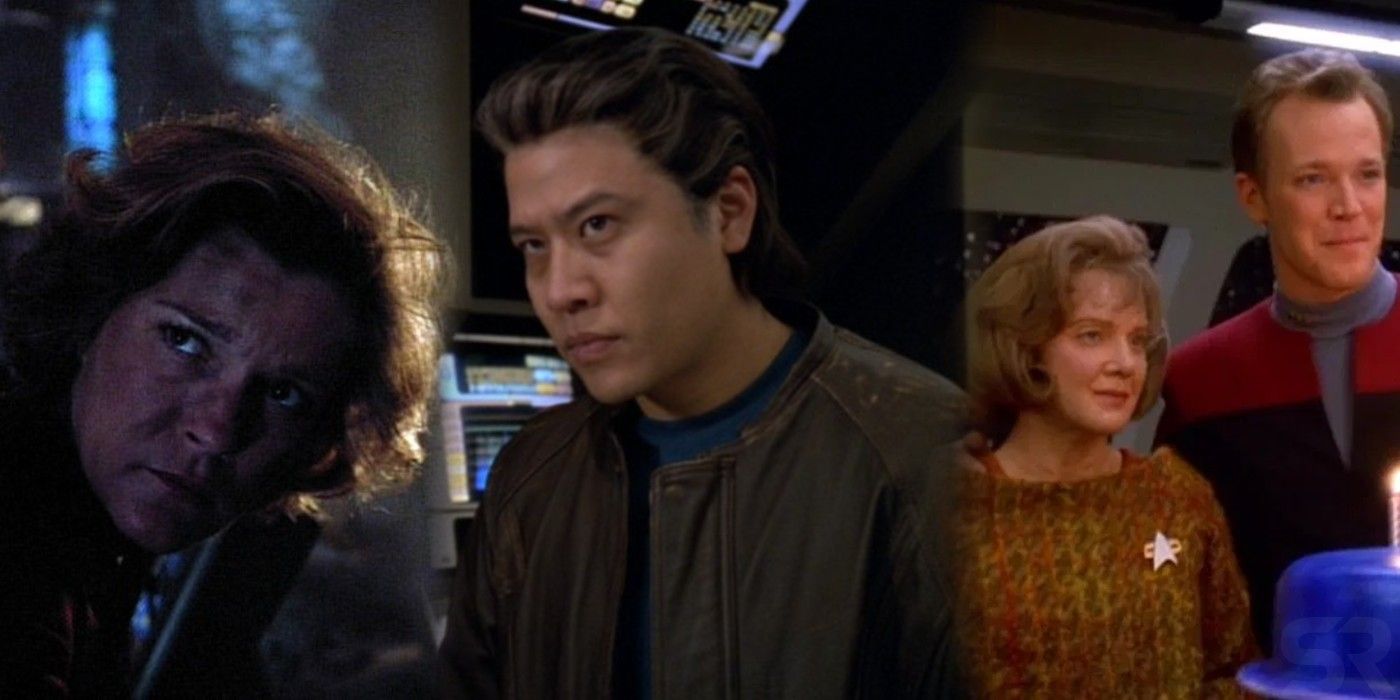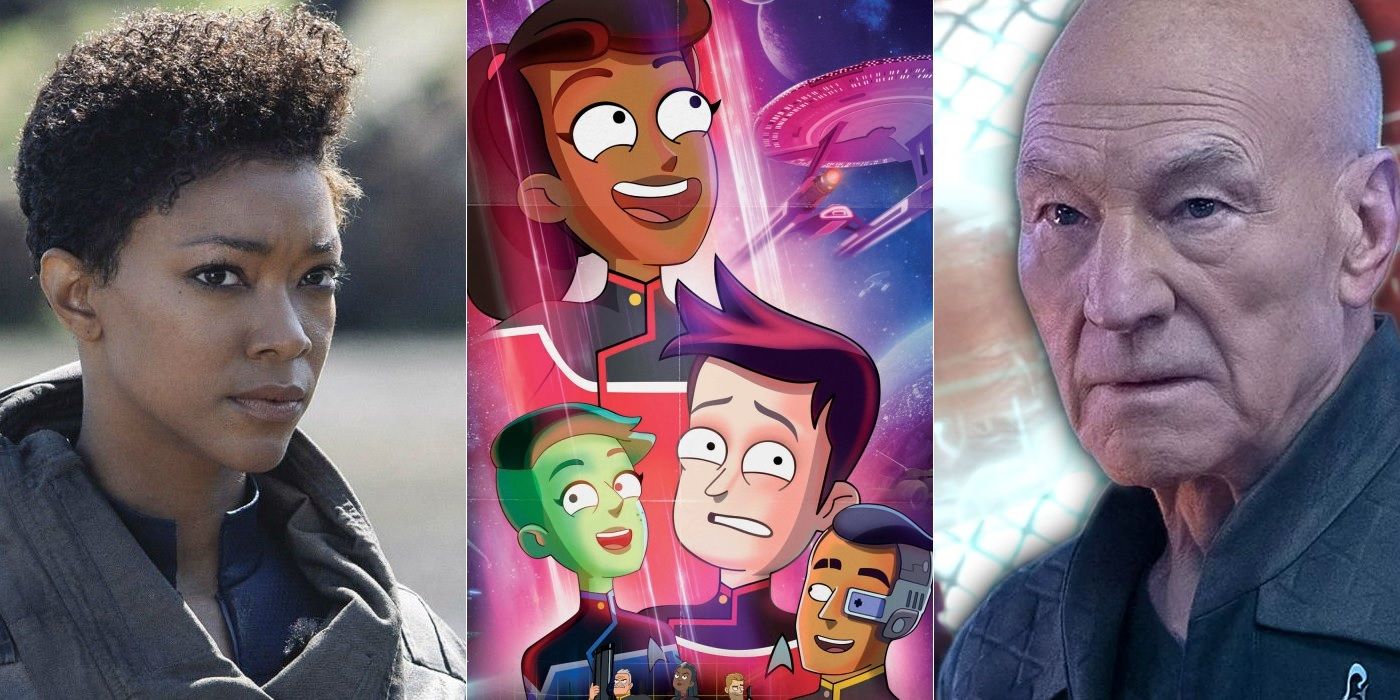Unlike series such as Star Trek: Voyager, the newer iterations of the franchise, like Star Trek: Discovery and Star Trek: Picard, have decided not to use a trope that classic Star Trek was famous for. "Classic" Star Trek is usually thought of as the five Star Trek series that aired from 1966 to 2005, beginning with Star Trek: The Original Series and ending with Star Trek: Enterprise. As part of their storytelling, all five series relied heavily on a trope that fans like to call the "reset button".
The reset button is the idea that the events that happen during an episode of television will be completely reset by the end, no matter how drastic. This creates what is called episodic television where each episode is a contained story that has no bearing on the other episodes in the series. The opposite of episodic is serialized television, where storylines carry over throughout the season or even the whole series and the audience needs to watch every episode to be able to follow along. The reset button was trendy on television during the 1960s all the way up through the 1990s, the time period in which most of classic Star Trek aired. This was because if viewers missed an episode of a series, it was virtually impossible to catch up before the next episode aired.
As such, all of classic Star Trek employed the reset button in accordance with the times. The Original Series and Star Trek: The Next Generation were particularly guilty of using the trope in its most basic form, and while Star Trek: Voyager was slightly more serialized than the previous series', the show found new and more creative ways to employ the reset button in its storylines. By virtue of the time period in which they are airing though, the new Star Trek shows have avoided the reset button altogether, instead opting for a completely serialized approach to their storytelling.
Star Trek's Reset Button Explained
As previously stated, the reset button was a trope many shows during the latter half of the 20th century employed to make sure that audiences who tuned into a show would not be confused by ongoing storylines if they had not regularly been watching the show. This would usually mean that one episode would be a contained story, with a plot that was resolved entirely by the end of the episode. With the advent of the internet and the gradual migration of many shows to streaming services, the trope is being slowly fazed out of television. This is especially true with shows that air exclusively on streaming services, but it is even true for network television shows as well, since episodes are often available on a streaming service the day after they air.
Because the majority of classic Star Trek aired during the period that the reset button was so popular, almost all the shows use it quite often. The Original Series employed the reset button in its most pure form, with every episode a single storyline that was resolved by the end and then never referenced again. The Next Generation moved away from the trope slightly, containing a number of two-part episodes and even some storylines that carried over from episode to episode. For the most part, though, The Next Generation still operated under the principle of the reset button. Subsequent Star Trek shows, like Star Trek: Deep Space Nine, Star Trek: Voyager, and Star Trek: Enterprise continued to move away from the trope and incorporate more serialized elements into their storytelling, but Star Trek: Voyager is remembered as one of the shows that used the reset button in some of the most creative ways.
How Voyager Used The Reset Button
Star Trek: Voyager aired from the mid-1990s to the early 2000s, at a time when storytelling on television was undergoing a change. Many shows of the time period straddled the line between episodic and serialized, incorporating elements of both into their plotlines. While the internet was in its infancy and streaming was years away from blowing up, shows were becoming easier to rewatch with things like DVD releases and the invention of DVR. As such, while some shows still followed an obsessively episodic format, it was more common to see serialized plotlines as well.
Voyager was no exception, constantly walking the line between episodic and serialized during its seven seasons. The premise of the show was that the crew was stranded in the Delta Quadrant and attempting to find a way back to the Federation, a conceit that the audience would need to be aware of for episodes to make sense. Voyager also contained a number of plotlines that spanned multiple episodes but found ways to tie itself back to its Star Trek roots and employ the reset button where possible. This would often be done through the use of time travel, in such episodes as "Timeless", "Year of Hell", and even the series finale, "Endgame".
Additionally, the season 2 episode "Deadlock" and season 5 episode "Course: Oblivion" are a couple of the best examples of a more creative use of the reset button in Voyager. Both episodes involve a duplicate version of Voyager's crew, and both episodes deal with catastrophic events happening to the duplicates while the real Voyager crew remains untouched, and in the case of "Course: Oblivion" even unaware of what is happening to their counterparts. These creative uses of the reset button allowed Star Trek: Voyager to play around with the trope while still transitioning towards a more serialized format.
How New Star Trek Avoids Using The Reset Button
After Star Trek: Enterprise ended in 2005, there was a period of 12 years before another Star Trek series came out. The franchise continued during that period with a few new movies, but Star Trek: Discovery was the first Star Trek television series on the air since Enterprise when it premiered in 2017. Discovery was followed quickly by Star Trek: Picard and more recently by Star Trek: Lower Decks, creating a second renaissance of new Star Trek shows. With the exception of Lower Decks, which still could be said to straddle the line between episodic and serialized, the new Star Trek series' seem to have largely done away with the idea of the reset button as part of their storytelling.
This is not to say that the idea of the reset button is off the table entirely for either Star Trek: Discovery or Star Trek: Picard. Discovery has used time travel as a form of reset more than once, most notably at the end of the second season. Likewise, Jean-Luc Picard's miraculous reanimation in an android body in Picard's season 1 finale is a text-book reset button scenario, altering drastic events so that the characters can continue to function as they were. Despite instances of the reset button in both shows, however, the overall format of the majority of new Star Trek is extremely serialized. It would be almost impossible to watch an episode of Discovery or Picard out of order because each episode builds on the one before it, creating an overarching plotline for the season and even the whole series instead of contained plots from episode to episode. In this way, new Star Trek has left the reset button behind in a way that old Star Trek never really did.
Star Trek's continued phasing out of the reset button has a lot to do with the time period in which the new shows are airing. Audiences today expect serialized content from the shows that they watch, and even though the occasional anthology show is popular, episodic television has become largely a thing of the past. By avoiding the reset button, new Star Trek has also avoided some of Star Trek: Voyager's mistakes and has been more engaging to watch as a result.




